 |
SRGC Bulb Log Diary |
| Home Recommend This Site To A Friend |
|
BULB LOG 38 17th September 2003
If you have read last weeks' log you will have worked out that I placed the first two pictures in the wrong order and it is the view looking down that I am not keen on except when used purely for aesthetic effect.
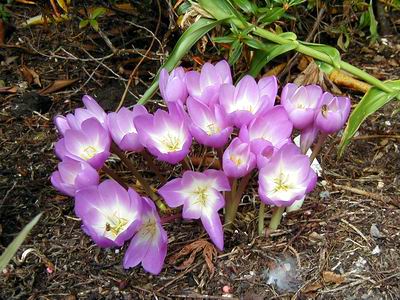
Colchicum autropurpureum This is a compromise image almost looking down but at enough of an angle to appreciate the tube and goblet shape to the flower. We got this as Colchicum autropurpureum but I am not fully convinced that this is the correct naming of this plant. Whatever the name, it is a very pretty, welcome, autumn flowering colchicum in our garden 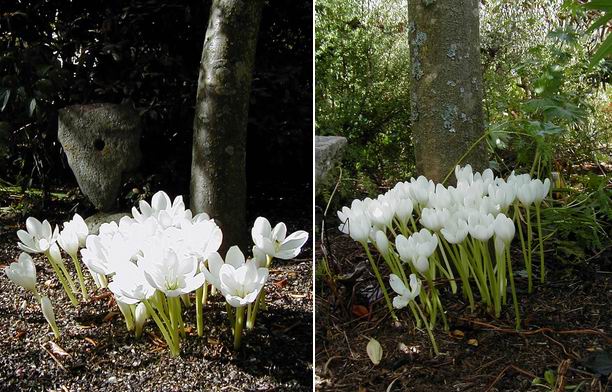
Colchicum speciosum album Colchicum speciosum album is a very reliable bulb which flowers every year without fail and increases steadily so you soon have a good sized clump. Colchicums are much maligned because of their 'large leaves' but with careful planting this need not be a problem, it can in fact be benefit providing interest to those difficult areas close to trees. We grow many of our colchicums very close to trees (as these pictures show) where we can enjoy their flowers in the autumn and the leaves can grow all they want in the spring without problems. 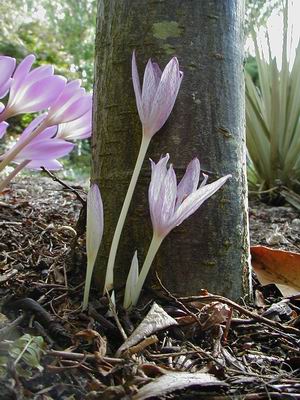
Colchicum agrippinum They are happy right up to the base of the tree as this beautiful tessellated Colchicum agrippinum shows even though this is one of the smaller leaved autumn flowering species. Colchicums are often called 'Autumn Crocus' but they are more closely related to lilies being in the family, Liliaceae. 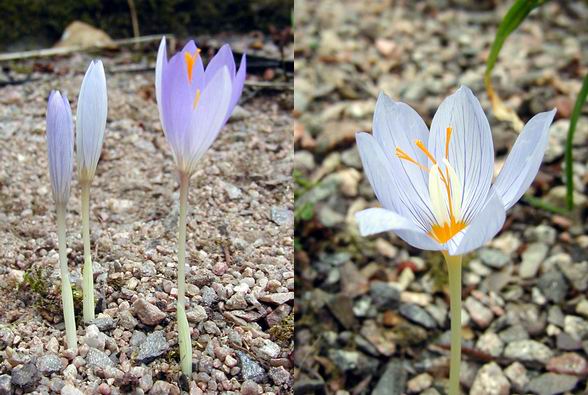
Crocus goulimyi & pulchellus True Autumn crocus like Crocus goulimyi & pulchellus are in the family Iridaceae and they are also in flower just now. 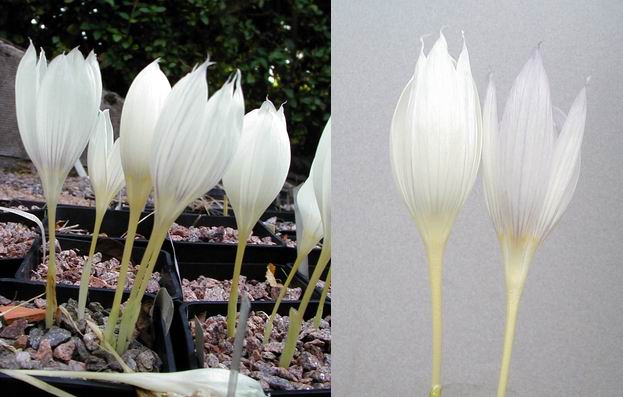
Crocus vallicola I am returning to one of my favourites, Crocus vallicola, to show you the variation that you can get within a species. Notice how the violet stripes and yellow spots on the inside are very visible from the outside on some but not on others, also the one on the right of the picture on the right, has a wash of violet all the way up the tepals to their wispy tips. These beautiful flowers with all their variations are among the delights that make raising bulbs from seed so rewarding. 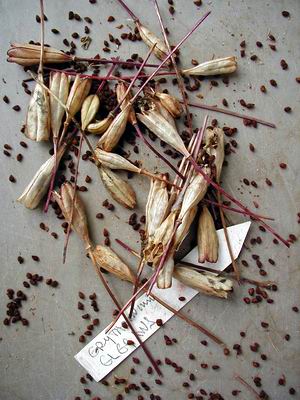
Erythronium elegans seed Talking of seed we are now entering the optimum period, that 'time window' when bulb seed should be sown to achieve best germination results. All the winter flowering bulbs, colchicum, crocus, erythronium, fritillaria, narcissus, etc are best sown over the next two months. I am in the process of going through all the paper bags that I stored the seed pods full of seed in, when I collected them in June -July, and separating the seed out from the chaff and writing the labels in preparation for sowing. 
Blind labels There is always much discussion about labels and how to make them permanent. Our answer is to use the aluminium slats from old window blinds (always looking at recycling) which can be easily cut using a pair of strong scissors or even better still, a paper guillotine. You can cut them to any size you like and if you make them long enough to turn the end at right angles when you place it in the ground this makes it very difficult for the birds to pull them out. You can write on them with pencil or fiber tip pen but we use a small rotary engraving tool which is quick and easy to use and makes the labels permanently legible. 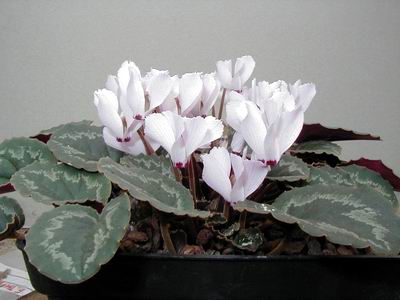
Cyclamen mirabile 2 Back in the bulb house we have some Cyclamen mirabile which also shows variation in the flower and leaf as well as the amount of leaf developed at flowering time. 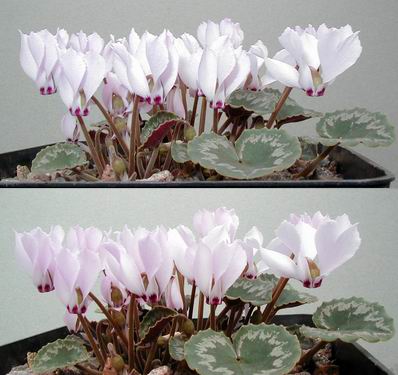
Cyclamen mirabile flash In this second picture I am also illustrating whether to use flash or not when taking pictures. I often do both and decide which I prefer when I view the results, the top one is with flash and the bottom in natural light and in this case there is little difference. I do love Cyclamen mirabile, both these forms are compact with good leaf markings which are pink when the leaves first emerge fading to silver and they have a delicious honey scent. The pink flowers have delicate gray lines running up them which reminds me of Cyclamen intaminatum. 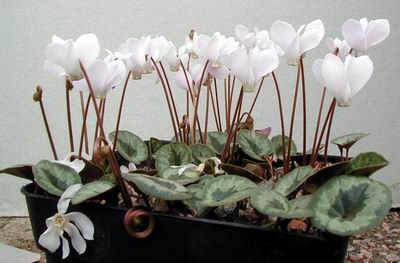
Cyclamen intaminatum ^ back to the top ^ |